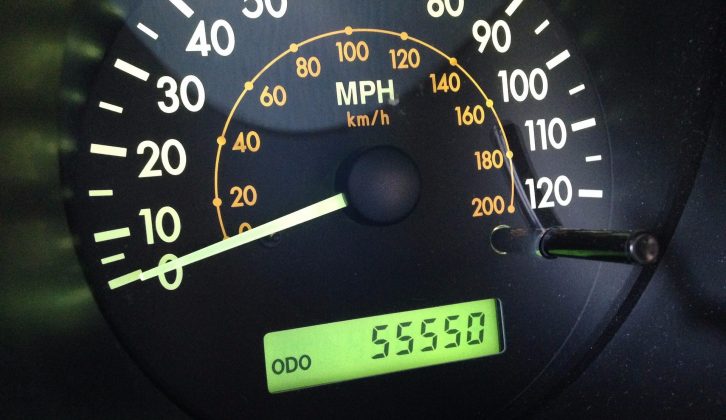What would you consider to be high mileage?
I recently read that one dealer turned down buying in a three-year-old motorhome because it had too many miles on the odometer.
But how many was too many?
About 18,000 miles, just 6000 a year on average – I think that’s crazy!
If you’re browsing the used motorhomes for sale pages, where would you draw the line on mileage?
Built to last!
Most motorhomes are built on light commercial vehicles, designed to cover up to 100,000 miles a year as delivery vans, and usually with a variety of drivers who treat the accelerator as a simple on-off switch.
So why is it that some dealerships still seem to be perpetuating the high-mileage myth?
I think it’s largely down to the average motorhome not covering many miles.
As I understand it, the average is somewhere between 3000 and 5000 miles a year.
I fully understand why this happens – our own motorhome has covered fewer than 2000 miles in the two years we’ve owned it (although it was a delivery van in its previous life, so it does have 210,000 miles on the clock).
Pressure of work dictates that we simply don’t have enough opportunities to get out there and tour, and I’m sure the same goes for many motorhome owners.
The perils of low-mile living
Low mileage actually creates more problems with the base vehicle, especially if the owners follow the manufacturer’s service schedule based on mileage.
Many manufacturers now list service intervals of 20,000 miles, which may take some owners a lot of years to achieve.
Low-mileage vehicles will suffer corrosion on parts that would ordinarily be kept clean by regular use.
Brake discs, for example, can suffer premature failure because of rust pitting their surfaces.
Pads can crumble because they aren’t being heated frequently, as they would be in regular use.
Handbrakes can and often do seize if left for extended periods of time.
Suspension components can seize up and the chassis may suffer more from condensation than a vehicle in regular use.
Engines and transmissions will always be better off if they are run regularly.
Learning from experience
I recall that, as an apprentice, we had a Ford Capri parked for about six months in the yard of the garage where I worked.
When the time finally came to move it, the engine had seized, with rust in the cylinder bores.
When an engine is started after a lengthy lay-up, it can take several seconds for the oil to get all the way around the components, meaning there will often be rapid wear during the first 30 seconds or so.
Clutches have also been known to seize to the flywheel during extended lay-ups.
This can usually be cleared by putting the gearbox in gear and holding down the clutch while operating the starter – but this doesn’t always work and it may be necessary to remove the gearbox.
Possibly one of the worst things for a motorhome in irregular use is rodents making their nests there.
I see several motorhomes each year with evidence of rodent activity, whether it be tooth marks in plastic coatings under the vehicle, or dead mice in air filters.
Our advice? Get out there and enjoy yourselves!
A keen motorcaravanner, Practical Motorhome’s technical expert Diamond Dave runs his own leisure vehicle workshop. Find out more at Dave Newell Leisure Vehicle Services.
Low mileage actually creates more problems with the base vehicle









